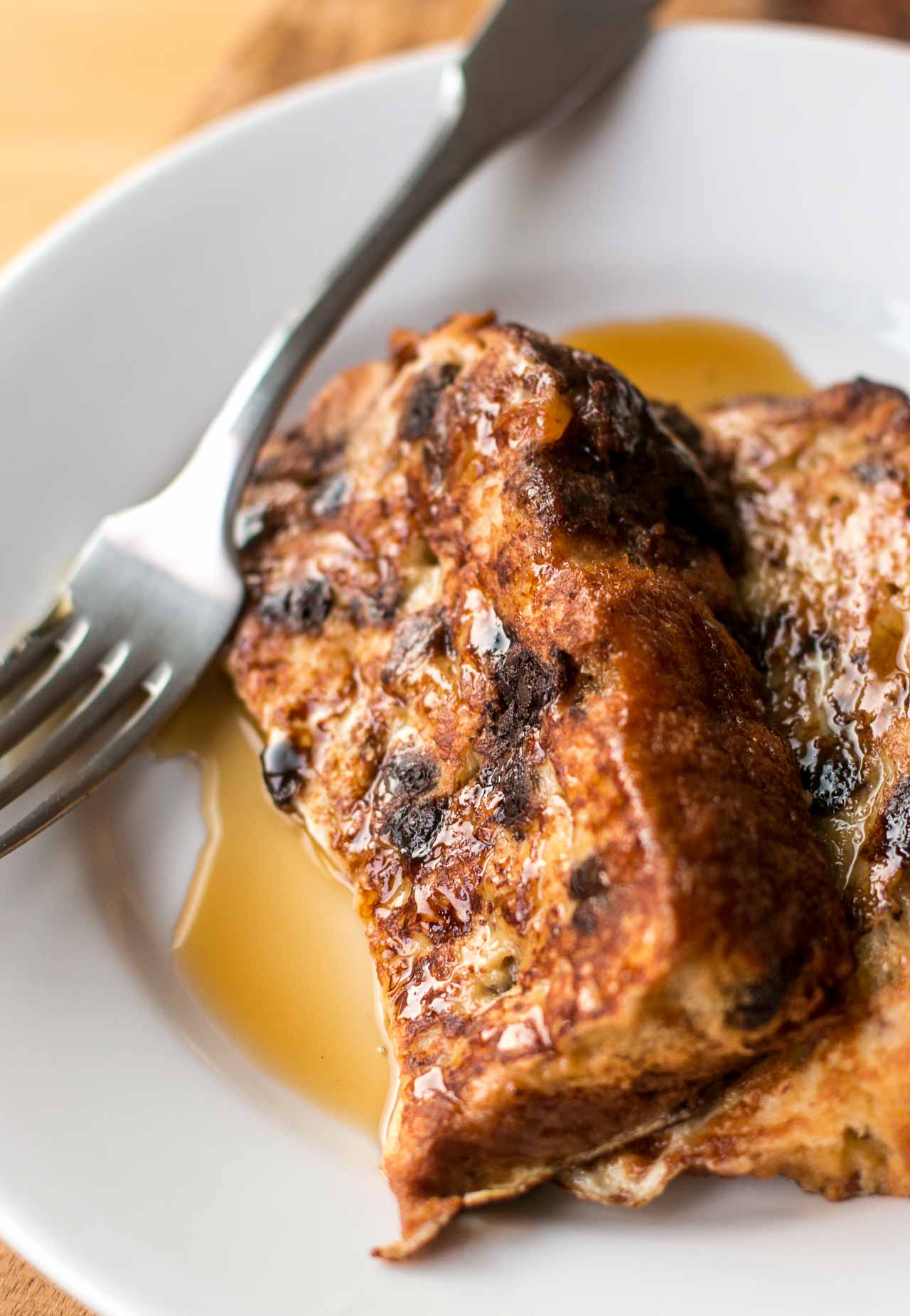French Toast Cubes with Salted Honey Custard
Happy June my dear friends! It’s wonderful to be back in the blog space, and to bring you this new and *very* luscious recipe for French Toast Cubes. Where did this divinity come from?! I have no idea, but I was pretty excited to receive… The post French Toast Cubes with Salted Honey Custard appeared first on My New Roots.



Happy June my dear friends! It’s wonderful to be back in the blog space, and to bring you this new and *very* luscious recipe for French Toast Cubes. Where did this divinity come from?! I have no idea, but I was pretty excited to receive the download. It’s a real egg-celebration! And right at the height of the season here in Ontario, as we witness the forces of life unfolding, in every moment.
Since I’d like to focus on our star ingredient today, let’s talk about sourcing and buying eggs. There is so much to decipher when purchasing in regards to the grade, size, and raising claims, along with the nutritional, ethical, and environmental impacts of these varieties, so I hope that you find my guide to this highly nutritious and miraculous food helpful to you. 


GRADE
Eggs are given grades (AA, A, or B) based on interior quality factors like defects and freshness, and exterior factors reflecting shell attributes. Grade A eggs have thick whites (Grade AA whites are slightly thicker) which do not spread easily, making them a preferred choice for frying. Meanwhile, Grade B eggs usually have thinner egg whites, making them ideal for baking, omelets, fresh toast cubes for example, and yes, custard.
SIZE
Eggs vary in size (Extra Large, Large, and Medium are the most common sizes in stores) based on their weight. The size markings on egg cartons tell the minimum net weight for a dozen eggs. If you are looking for more protein, you should choose a larger-sized egg.
RAISING CLAIMS
Many are concerned with the way egg-laying hens are raised. Here’s a quick definition for some popular claims.
Conventional
Conventionally-raised eggs typically come from chickens that are bred in large industrial facilities. These chickens are often confined to cages and given a diet of corn and soy, supplemented with vitamins and minerals. Conventional eggs are usually the least expensive option and are widely available, but many people have concerns about the welfare of the chickens and the environmental impact of this type of farming.
Organic
Organic eggs come from chickens that are fed an organic diet and are not given antibiotics or hormones. In order to be certified organic, at least by USDA standards, the chickens must be cage-free, and also have seasonal access to the outdoors. Organic eggs are typically more expensive than conventionally-raised eggs, but many people believe that they are healthier and better for the environment.
Fortified / Nutritionally-enriched
Fortified eggs come from hens who have been raised by conventional standards, but have been given feed that is enriched in some capacity. Typically, this can include anything from ground flax seeds, to sea kelp, sunflower oil, fish oil, alfalfa, or rice bran. Depending on the feed, fortified eggs may have more Omega-3s, vitamin D, vitamin E, folate, and iodine.
Pasture-Raised
Pasture-raised eggs come from chickens that are allowed to roam freely on pasture, scratch, forage, and eat a natural diet that includes grasses, insects, and other plants. Pasture-raised chickens are often considered to be the most humane and sustainable way to produce eggs, and many people believe that the resulting eggs are more nutritious and flavorful than conventionally grown eggs. This is true depending on, you guessed it; what they are eating! 


So, what are the differences between these types of eggs? Here are some key factors to consider:
NUTRIENT CONTENT
There is some evidence to suggest that pasture-raised eggs may be more nutritious than conventionally grown eggs. Studies have shown that pasture-raised eggs can have higher levels of omega-3 fatty acids, vitamin D, and antioxidants than conventionally grown eggs. However, the differences in nutrient content between different types of eggs can be small (and in some cases hard to track due to season, soil health, and the specific foods eaten) and may not be significant enough to make a major difference in overall health.
ANIMAL WELFARE
If you are concerned about the welfare of the chickens that produce your eggs, you may want to consider buying pasture-raised or organic eggs because these types of eggs come from chickens that are allowed to roam freely and are not confined to small cages. However, it’s worth noting that the regulations around organic and pasture-raised farming can vary, and some farms may have more humane practices than others. If you have the possibility to do so, ask your local egg provider how the hens are raised, what their physical environment is like, and even their slaughtering practices.
ENVIRONMENTAL IMPACT
All food production impacts the environment. To minimize the impact of egg production consider buying organic or pasture-raised eggs, as these types of farming practices often involve less use of or are free from pesticides and fertilizers, and may have a smaller carbon footprint than conventionally grown eggs. However, it’s worth noting that the environmental impact of egg production can be complex, and the specific practices used by each farm can vary. Again, ask your farmer!
In summary, the type of eggs you choose to buy will depend on your budget, priorities, and values. Organic and pasture-raised eggs may be more nutritious and have a smaller environmental impact, but they are often more expensive. Conventionally grown eggs may be easier to find and more affordable, but some people have concerns about the welfare of the chickens and the environmental impact of this type of farming. Ultimately, the best way to choose eggs is to do your research, read labels carefully, speak with your local egg provider if possible, and find the option that best suits your needs. 


Okay, now to the recipe  Read More
Read More






















/cdn.vox-cdn.com/uploads/chorus_asset/file/25829976/STK051_TIKTOKBAN_B_CVirginia_B.jpg)













/cdn.vox-cdn.com/uploads/chorus_asset/file/24435316/STK150_Bing_AI_Chatbot_02.jpg)








































